Last week was a tough and frustrating week for those living in Klang Valley with water cuts that lasted days — up to seven days in some areas.
The water cut affected 1.2 million households in Selangor, Kuala Lumpur and Putrajaya, frustrating many despite most living in the region being used to water cuts.
Is it just us at Rojak Daily who have large pails and containers to store water at home because we’re so used to facing water cuts? We don’t think so.
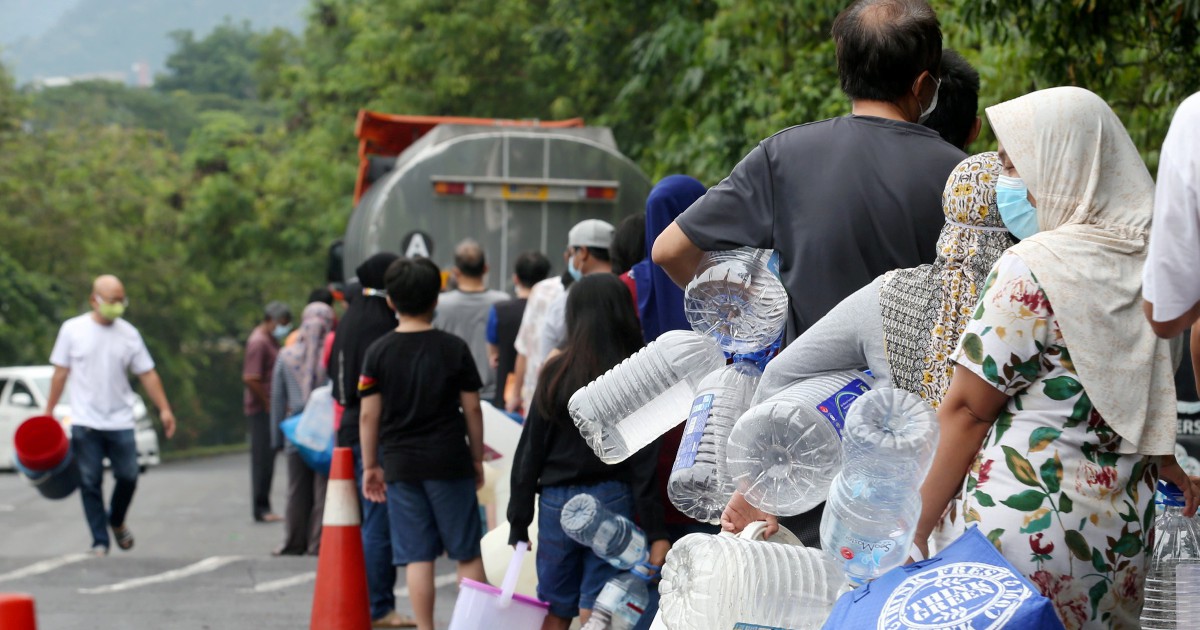
The Malay Mail, quoting last year’s National Water Services Commission (SPAN) Water and Sewerage report showed that the situation has actually improved in 2018 compared to 2017.
There were 11,074 unscheduled water interruptions in 2018, as opposed to a whopping 19,061 the previous year. Even the scheduled water cuts were fewer in 2018 at 770 compared to 798 the previous year.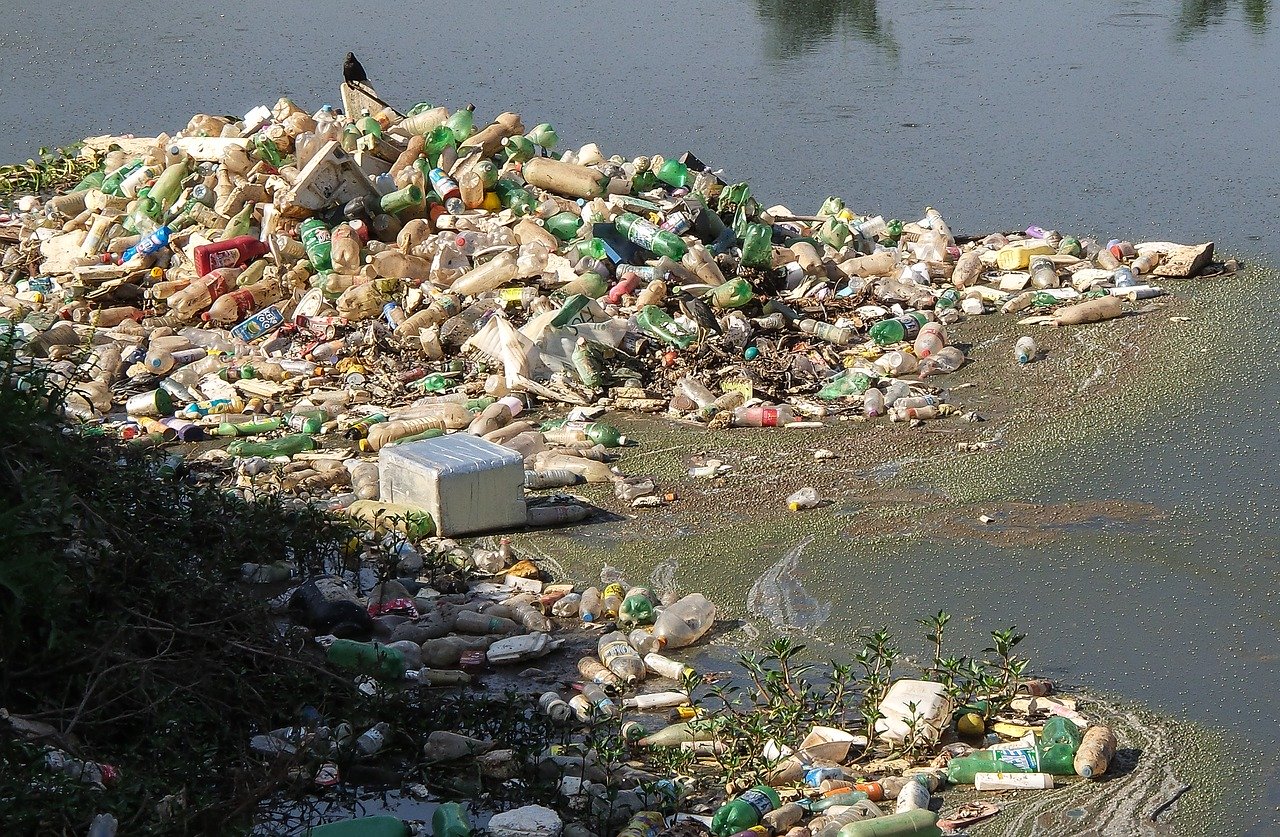
As seen in the latest case, water pollution can force providers to close water treatment plants. The act of one machinery maintenance factory in Rawang that had failed to store oil waste properly had led to the suffering of millions of people.
What’s worse is that subsequent reports have shown that this is not the factory’s first offence and the owners don't even have a license to operate the factory!
There have been three incidents of water contaminations in 2019 alone, which also led to the closure of water treatment plants, leading to unscheduled water cuts.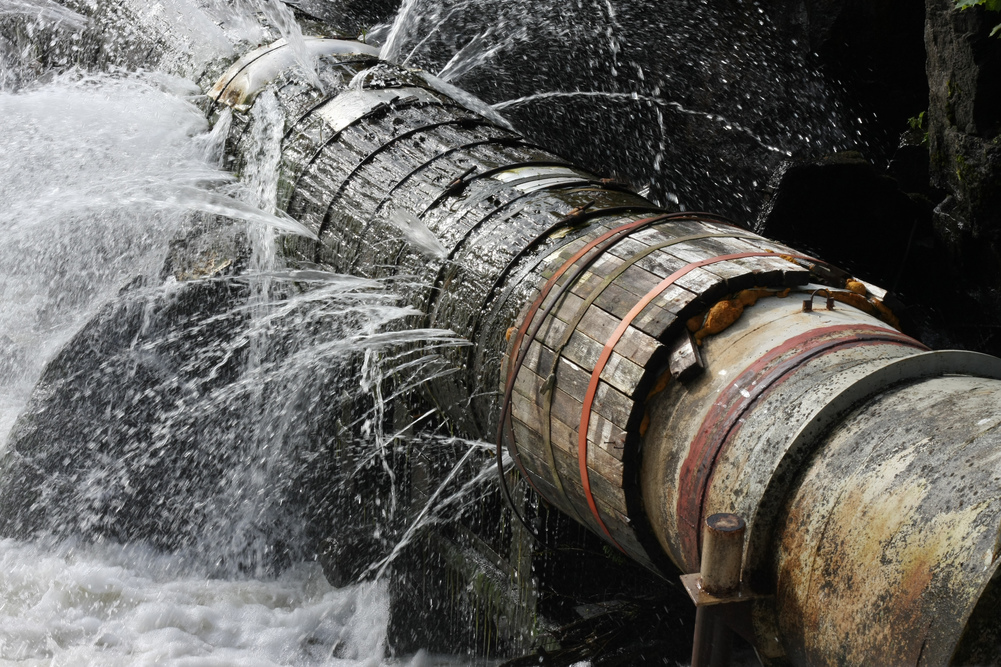
If you’ve ever complained about water cuts to any authorities and have given them your contact details, you’ll be the receiver of SMSes every time there’s a burst or leaking pipe in your area.
Until this writer did, we had no idea how often this happens even when water disruptions are not necessarily the result of these incidents.
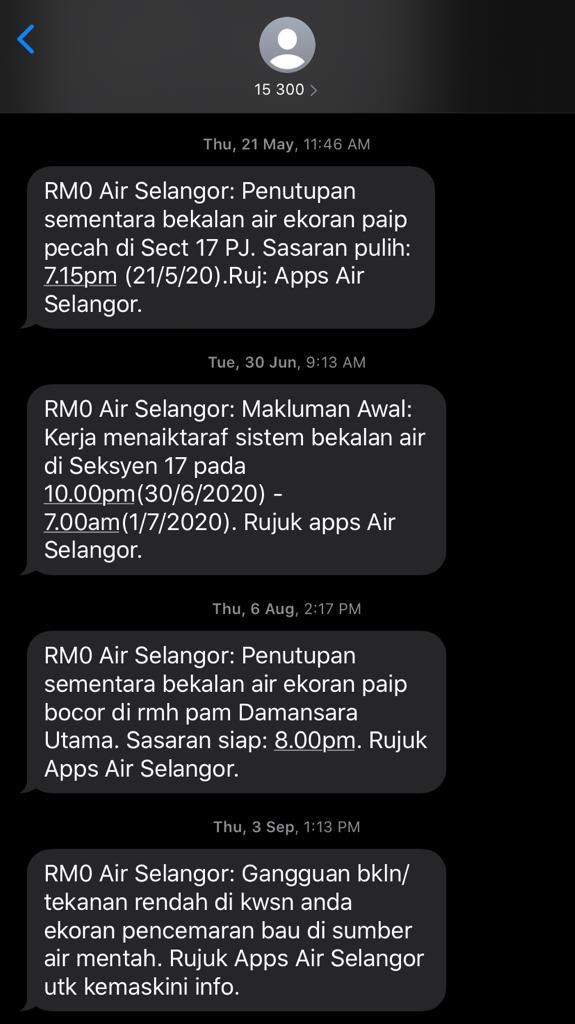
According to a report in September 2019, the Selangor state government intends to repair and replace some 22,000 kilometres of piping system in Selangor, Kuala Lumpur and Putrajaya (all if which falls under the jurisdiction of Air Selangor).
Selangor’s then Menteri Besar Amirudin Shari had said that there was a 30-year plan to improve and manage the water system in the state.
Some of the measures that has already been taken included the replacement of 438 kilometres of piping system in 2019, with the plans to spend about RM1 billion every year to repair and replace the old piping system.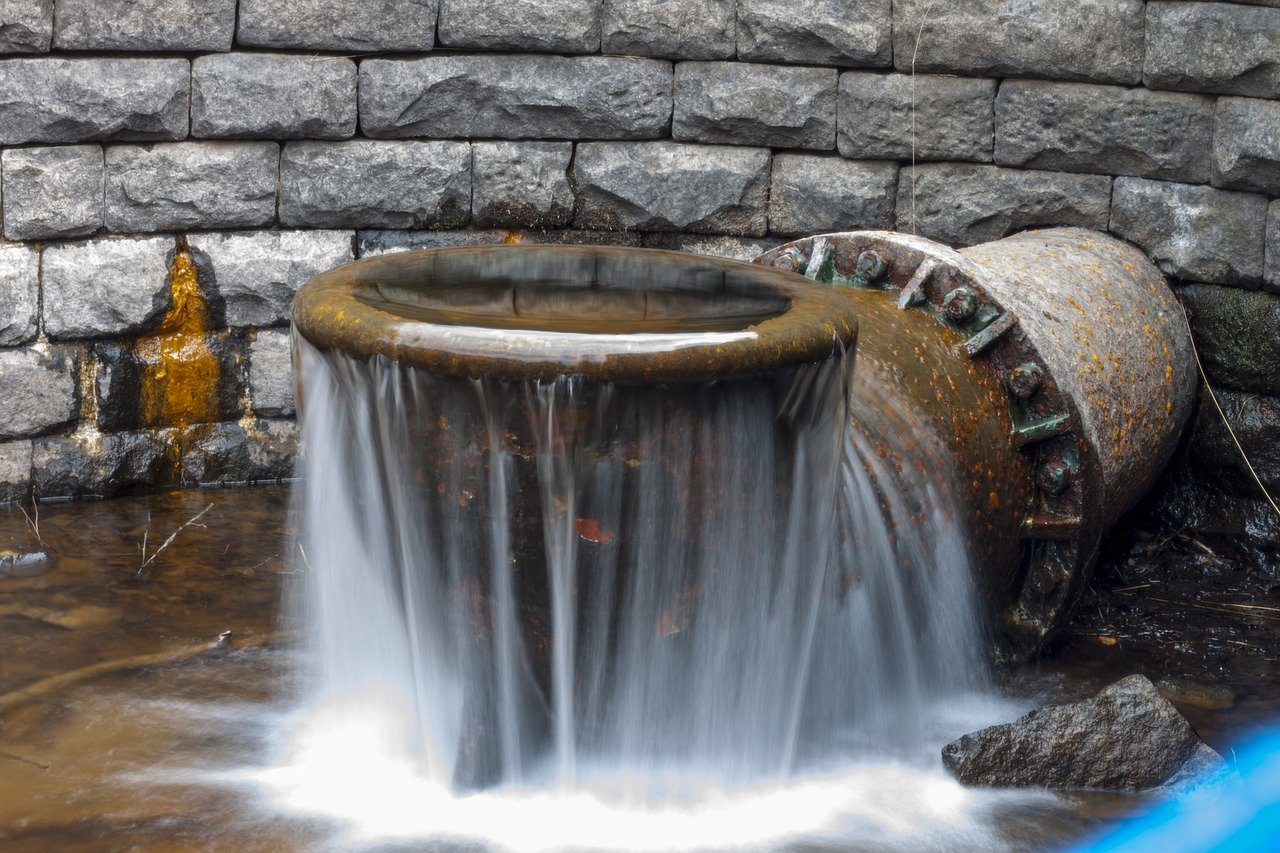
Non-revenue water basically means water that is “lost” before it reaches consumers. There are many reasons for this happening including burst and leaking pipes, as well as overflowing of water at reservoirs and pump houses.
According to this report, the Selangor government managed to reduce NRW to 28.73% in 2019 from 30.05% the year before. Even so, the number is still high compared to the national goal of 25%.
However, steps are being taken to improve the situation in the future..gif)
We can confirm that pollution and NRW, at least, is a problem in every state.
Water pollution caused by industries, agriculture and the public (yup. General public who throw sampah everywhere including in the longkang and sungai are the culprits too). You can read all about water pollution and the impact in this report by water quality and modelling Zaki Zainuddin here.
If we’re going to talk about NRW, we can also confirm that Selangor is not the state with the highest percentage. In fact, it’s somewhere in between the list.
The top three states with the highest NRW are Perlis (the percentage have been steadily increasing 55.8 per cent in 2014 to a staggering 63.1 per cent in 2017. That’s more than half the water going to waste!), followed by Pahang (53.1 per cent in 2014, but has been steadily improving, standing at 47.5 per cent in 2017), and Sabah (which has been fluctuating between 51 per cent and 55 per cent).
Although the percentage shows that other states actually have more NRW, Selangor loses a lot more water in terms of litres lost per day.
Klang Valley’s population makes up about one fourth of the country’s population, which means the most consumption of water as well.
In 2014, the “system input volume” i.e. water that went through the system in Selangor was 4,593 million litres per day. 1,545 million litres of water were considered NRW that year. Perlis, on the other hand, only lost 121 million litres per day in that year.
In 2017, the number was 1,526 million litres of NRW for Selangor.
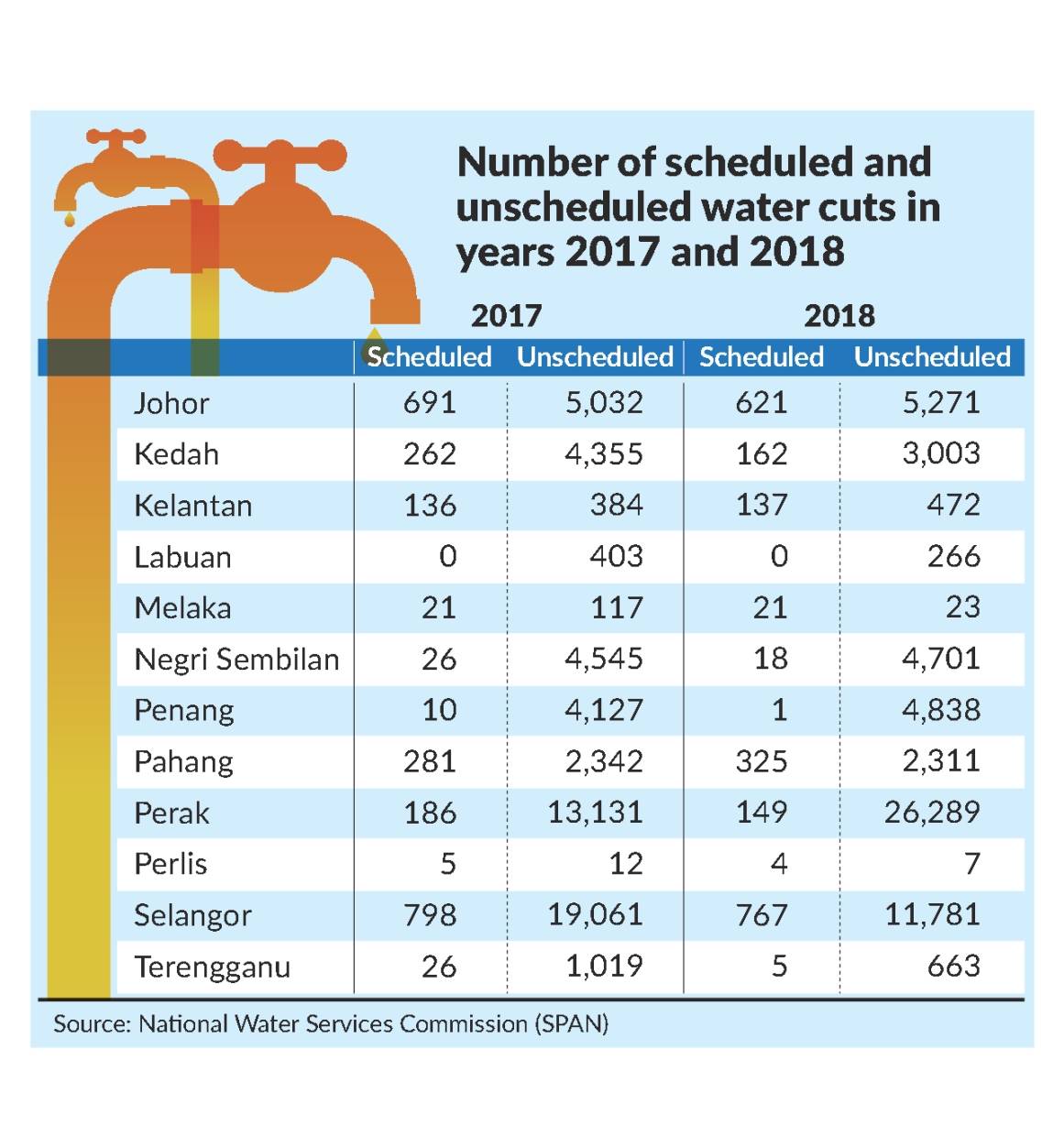
According to this report, Perak actually had more unscheduled water cut in 2018 compared to Selangor, although Selangor did hold the unenviable number one position in 2017.
In 2018, Perak recorded 26,289 compared to Selangor’s 11,781. The previous year, Selangor had 19,061 cases, while Perak had 13,131.
When it comes to scheduled water cuts, however, Selangor was still the king with over 700 cases in both years.
Between 2013 and 2018, Selangor has actually seen a massive decrease in unscheduled water cuts i.e. by 86%!.gif)
Although it looks like things are improving, it’s not happening quite fast enough. While many of the issues need resources and time to be solved, there are some that can be solved with better laws and enforcement.
The World Wildlife Fund (WWF) suggest that there is an over-emphasis on “water supply management” i.e. managing supply to cater to demand. This, the organisation says, is not sustainable as the demand will continue to increase with time.
“…there is a need to look at water wastage and rates to change the appalling consumptive behaviour of most Malaysians towards water,” it says on its website.
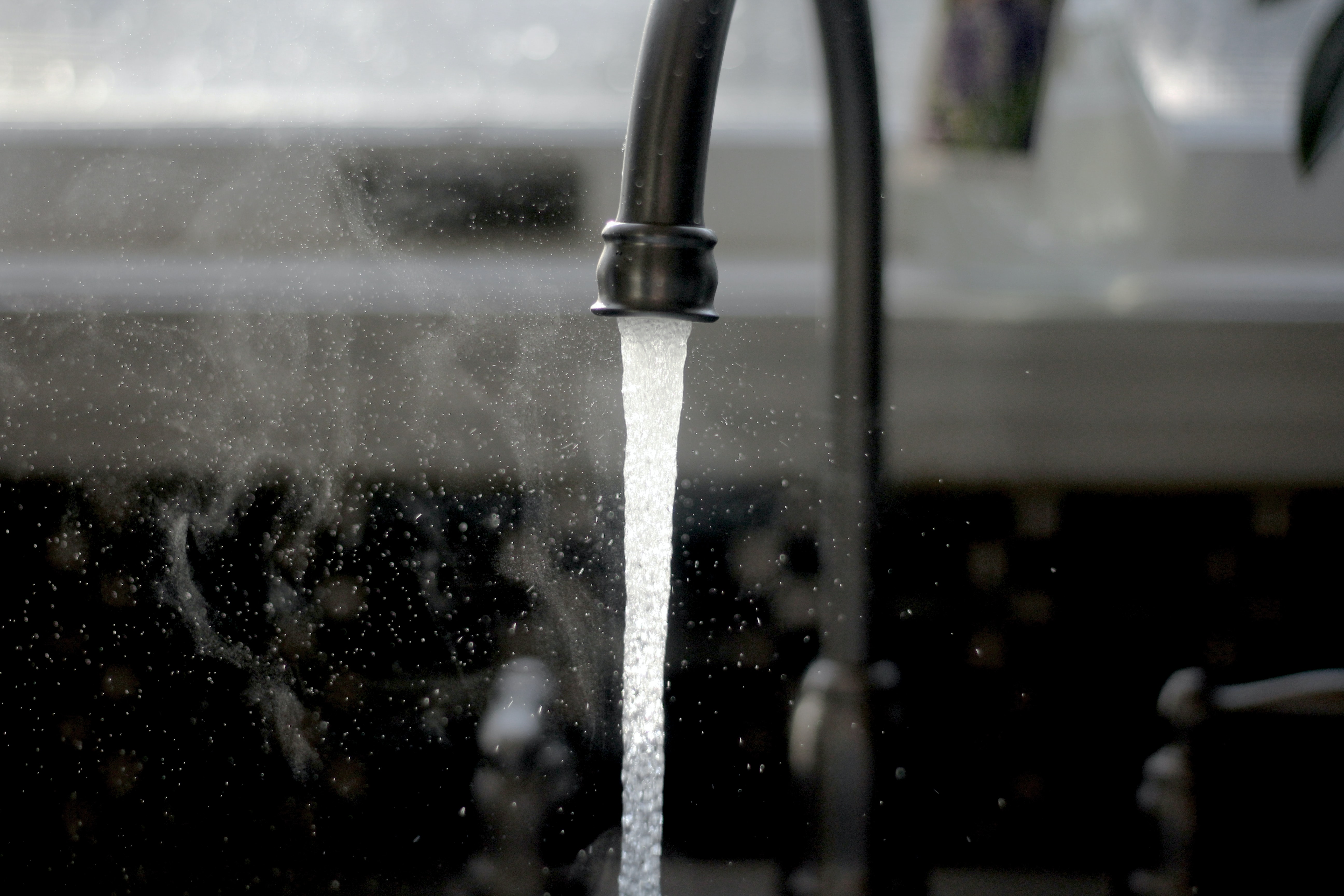
WWF also suggests that destruction and degradation of water catchment areas is also one of the major issues in Malaysia. That, as well as pollution and inefficient use of water in agriculture, are some of the things that the government will have to look into for long-term solution.
Speaking about the recurring water disruption issues, Former National Water Service Commission chairman Charles Santiago told Astro Radio News, that it was high time the government looks into National River Protection authority.
“If you create a buffer on both sides of the river, maybe 300 or 400 metres of buffer on both sides, where no economic activities can take place…which means no industries, no businesses, nothing like that whatsoever.
“Then, the buffer as well as the river will become a part of national security. So, there will be police, CCTV, there will be enforcement and so on and so forth,” he said.
Santiago, who is also the Klang member of parliament, added that this could help prevent river pollution, which accounts for 80 per cent of the water source which are processed for consumption.
“We not only have chemicals and pollution, we also have electronic waste in the river, we have rubbish being thrown into the river, we have plastics thrown into the river, we have animal husbandry which is droppings of chicken and pigs in the river.
“So, the river is becoming very polluted and it’s detrimental in the long run, so we have to protect the river at all cost,” he said.
Santiago also suggest that all households and industries should have rainwater catchment, not only in Selangor but all over the country. He said that the government should introduce incentives to encourage rainwater harvesting.
While a large part of solving the problem of frequent water cuts falls on the government and governing bodies, consumers play a part too.
Malaysians consume way more water than the suggested 165 litres per person per day by the United Nations.
In fact, Malaysians water usage has seen an increase from an already high 222 litres in 2017 to 230 litres last year.
It is high time we start conserving water and be more mindful of using our already limited resources.
It is also important to know the correct way to dispose of our wastes and educate those around us on the detrimental effects of throwing things into our longkangs and rivers.
We’re all in this together, so let’s work together to ensure that we have enough water for all in the future.
The water cut affected 1.2 million households in Selangor, Kuala Lumpur and Putrajaya, frustrating many despite most living in the region being used to water cuts.
Is it just us at Rojak Daily who have large pails and containers to store water at home because we’re so used to facing water cuts? We don’t think so.

The Malay Mail, quoting last year’s National Water Services Commission (SPAN) Water and Sewerage report showed that the situation has actually improved in 2018 compared to 2017.
There were 11,074 unscheduled water interruptions in 2018, as opposed to a whopping 19,061 the previous year. Even the scheduled water cuts were fewer in 2018 at 770 compared to 798 the previous year.
What are some of the reasons for water disruptions?
#1 Water pollution

As seen in the latest case, water pollution can force providers to close water treatment plants. The act of one machinery maintenance factory in Rawang that had failed to store oil waste properly had led to the suffering of millions of people.
What’s worse is that subsequent reports have shown that this is not the factory’s first offence and the owners don't even have a license to operate the factory!
There have been three incidents of water contaminations in 2019 alone, which also led to the closure of water treatment plants, leading to unscheduled water cuts.
#2 Burst and leaking pipes

If you’ve ever complained about water cuts to any authorities and have given them your contact details, you’ll be the receiver of SMSes every time there’s a burst or leaking pipe in your area.
Until this writer did, we had no idea how often this happens even when water disruptions are not necessarily the result of these incidents.

According to a report in September 2019, the Selangor state government intends to repair and replace some 22,000 kilometres of piping system in Selangor, Kuala Lumpur and Putrajaya (all if which falls under the jurisdiction of Air Selangor).
Selangor’s then Menteri Besar Amirudin Shari had said that there was a 30-year plan to improve and manage the water system in the state.
Some of the measures that has already been taken included the replacement of 438 kilometres of piping system in 2019, with the plans to spend about RM1 billion every year to repair and replace the old piping system.
#3 Non-revenue water (NRW)

Non-revenue water basically means water that is “lost” before it reaches consumers. There are many reasons for this happening including burst and leaking pipes, as well as overflowing of water at reservoirs and pump houses.
According to this report, the Selangor government managed to reduce NRW to 28.73% in 2019 from 30.05% the year before. Even so, the number is still high compared to the national goal of 25%.
However, steps are being taken to improve the situation in the future.
Other states don’t have these problems meh? Why only Klang Valley always no water?
.gif)
We can confirm that pollution and NRW, at least, is a problem in every state.
Water pollution caused by industries, agriculture and the public (yup. General public who throw sampah everywhere including in the longkang and sungai are the culprits too). You can read all about water pollution and the impact in this report by water quality and modelling Zaki Zainuddin here.
If we’re going to talk about NRW, we can also confirm that Selangor is not the state with the highest percentage. In fact, it’s somewhere in between the list.
The top three states with the highest NRW are Perlis (the percentage have been steadily increasing 55.8 per cent in 2014 to a staggering 63.1 per cent in 2017. That’s more than half the water going to waste!), followed by Pahang (53.1 per cent in 2014, but has been steadily improving, standing at 47.5 per cent in 2017), and Sabah (which has been fluctuating between 51 per cent and 55 per cent).
Although the percentage shows that other states actually have more NRW, Selangor loses a lot more water in terms of litres lost per day.
Klang Valley’s population makes up about one fourth of the country’s population, which means the most consumption of water as well.
In 2014, the “system input volume” i.e. water that went through the system in Selangor was 4,593 million litres per day. 1,545 million litres of water were considered NRW that year. Perlis, on the other hand, only lost 121 million litres per day in that year.
In 2017, the number was 1,526 million litres of NRW for Selangor.
Yet, the other states don’t seem to face as many water cuts
This is not entirely true.
According to this report, Perak actually had more unscheduled water cut in 2018 compared to Selangor, although Selangor did hold the unenviable number one position in 2017.
In 2018, Perak recorded 26,289 compared to Selangor’s 11,781. The previous year, Selangor had 19,061 cases, while Perak had 13,131.
When it comes to scheduled water cuts, however, Selangor was still the king with over 700 cases in both years.
Between 2013 and 2018, Selangor has actually seen a massive decrease in unscheduled water cuts i.e. by 86%!
What else can be done?
.gif)
Although it looks like things are improving, it’s not happening quite fast enough. While many of the issues need resources and time to be solved, there are some that can be solved with better laws and enforcement.
The World Wildlife Fund (WWF) suggest that there is an over-emphasis on “water supply management” i.e. managing supply to cater to demand. This, the organisation says, is not sustainable as the demand will continue to increase with time.
“…there is a need to look at water wastage and rates to change the appalling consumptive behaviour of most Malaysians towards water,” it says on its website.

WWF also suggests that destruction and degradation of water catchment areas is also one of the major issues in Malaysia. That, as well as pollution and inefficient use of water in agriculture, are some of the things that the government will have to look into for long-term solution.
Speaking about the recurring water disruption issues, Former National Water Service Commission chairman Charles Santiago told Astro Radio News, that it was high time the government looks into National River Protection authority.
The government should come up with new regulations, following the recent massive water cuts that affected Klang Valley residents.
— Astro Radio News (@AstroRadioNews) September 11, 2020
Former SPAN chairman Charles Santiago says it's high time that we set up a National River Protection Authority.https://t.co/oxr8Lq6Ojq
“If you create a buffer on both sides of the river, maybe 300 or 400 metres of buffer on both sides, where no economic activities can take place…which means no industries, no businesses, nothing like that whatsoever.
“Then, the buffer as well as the river will become a part of national security. So, there will be police, CCTV, there will be enforcement and so on and so forth,” he said.
Santiago, who is also the Klang member of parliament, added that this could help prevent river pollution, which accounts for 80 per cent of the water source which are processed for consumption.
“We not only have chemicals and pollution, we also have electronic waste in the river, we have rubbish being thrown into the river, we have plastics thrown into the river, we have animal husbandry which is droppings of chicken and pigs in the river.
“So, the river is becoming very polluted and it’s detrimental in the long run, so we have to protect the river at all cost,” he said.
Santiago also suggest that all households and industries should have rainwater catchment, not only in Selangor but all over the country. He said that the government should introduce incentives to encourage rainwater harvesting.
It’s our responsibility too

While a large part of solving the problem of frequent water cuts falls on the government and governing bodies, consumers play a part too.
Malaysians consume way more water than the suggested 165 litres per person per day by the United Nations.
In fact, Malaysians water usage has seen an increase from an already high 222 litres in 2017 to 230 litres last year.
It is high time we start conserving water and be more mindful of using our already limited resources.
It is also important to know the correct way to dispose of our wastes and educate those around us on the detrimental effects of throwing things into our longkangs and rivers.
We’re all in this together, so let’s work together to ensure that we have enough water for all in the future.






